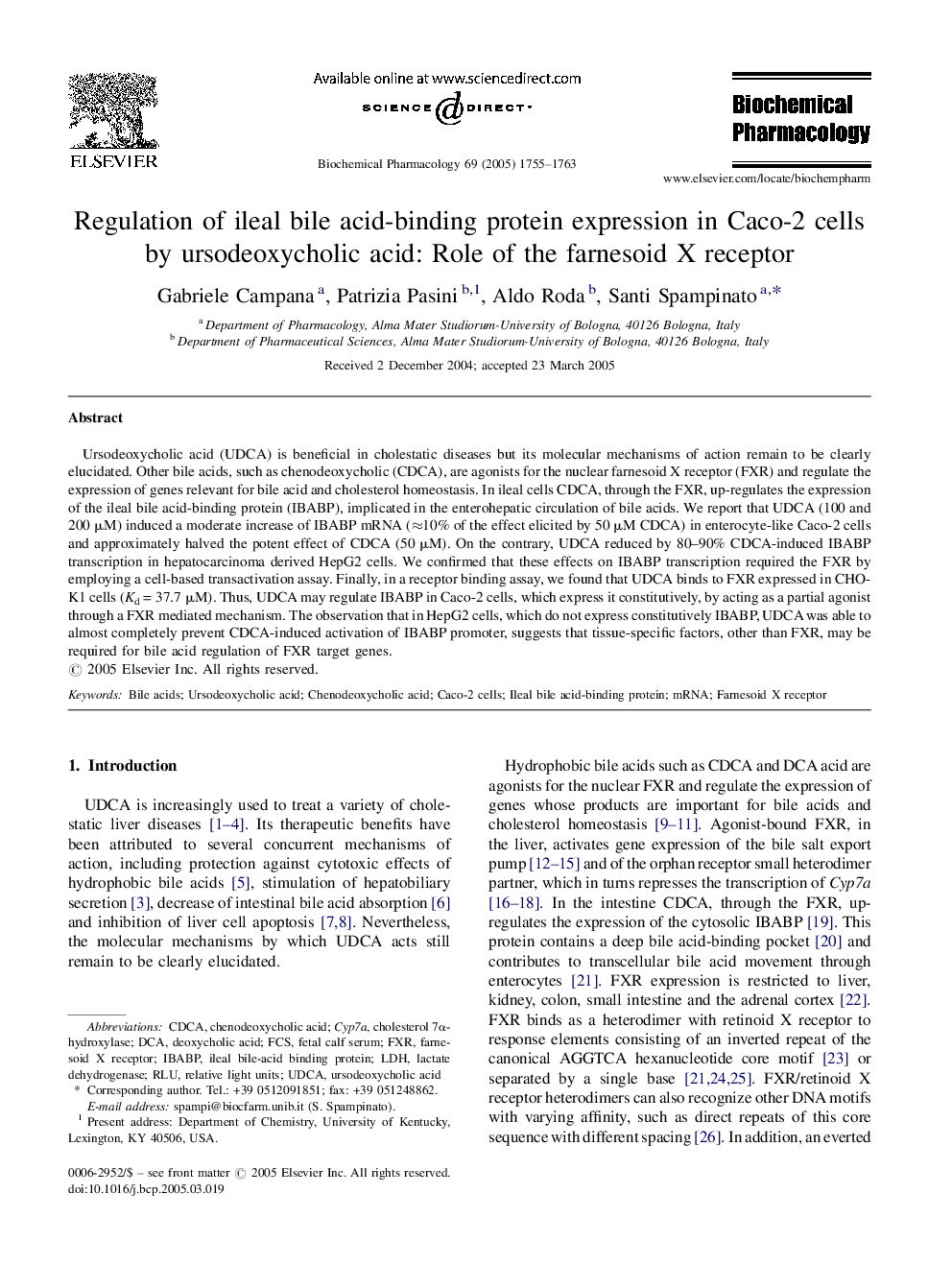| Article ID | Journal | Published Year | Pages | File Type |
|---|---|---|---|---|
| 9002031 | Biochemical Pharmacology | 2005 | 9 Pages |
Abstract
Ursodeoxycholic acid (UDCA) is beneficial in cholestatic diseases but its molecular mechanisms of action remain to be clearly elucidated. Other bile acids, such as chenodeoxycholic (CDCA), are agonists for the nuclear farnesoid X receptor (FXR) and regulate the expression of genes relevant for bile acid and cholesterol homeostasis. In ileal cells CDCA, through the FXR, up-regulates the expression of the ileal bile acid-binding protein (IBABP), implicated in the enterohepatic circulation of bile acids. We report that UDCA (100 and 200 μM) induced a moderate increase of IBABP mRNA (â10% of the effect elicited by 50 μM CDCA) in enterocyte-like Caco-2 cells and approximately halved the potent effect of CDCA (50 μM). On the contrary, UDCA reduced by 80-90% CDCA-induced IBABP transcription in hepatocarcinoma derived HepG2 cells. We confirmed that these effects on IBABP transcription required the FXR by employing a cell-based transactivation assay. Finally, in a receptor binding assay, we found that UDCA binds to FXR expressed in CHO-K1 cells (Kd = 37.7 μM). Thus, UDCA may regulate IBABP in Caco-2 cells, which express it constitutively, by acting as a partial agonist through a FXR mediated mechanism. The observation that in HepG2 cells, which do not express constitutively IBABP, UDCA was able to almost completely prevent CDCA-induced activation of IBABP promoter, suggests that tissue-specific factors, other than FXR, may be required for bile acid regulation of FXR target genes.
Keywords
Related Topics
Health Sciences
Pharmacology, Toxicology and Pharmaceutical Science
Pharmacology
Authors
Gabriele Campana, Patrizia Pasini, Aldo Roda, Santi Spampinato,
